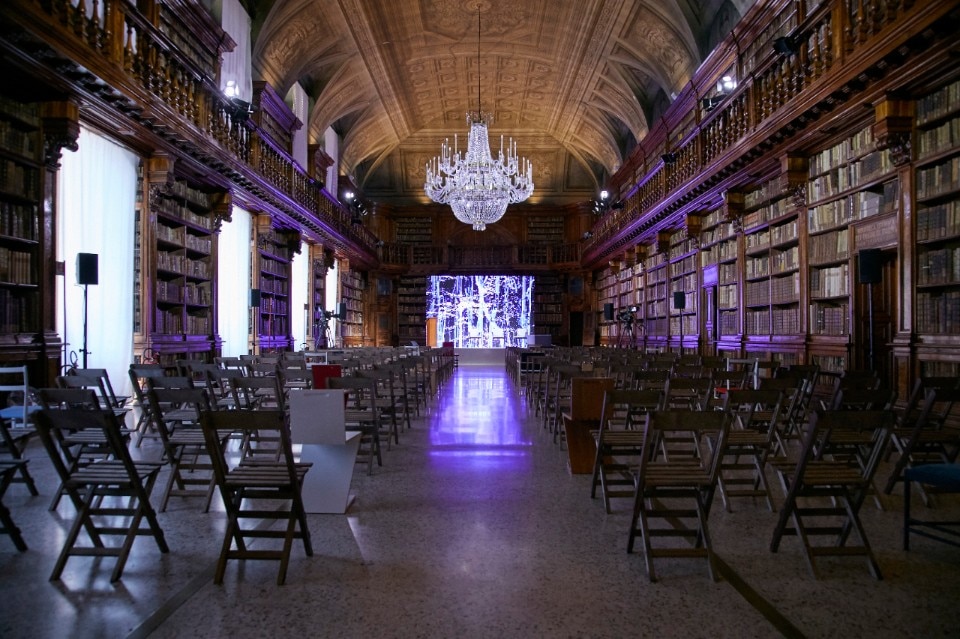In a Design Week where the Fuorisalone has eclipsed the actual Salone in terms of mundanity and media coverage, over the last ten year the influence of high fashion on the event has increased in importance, now revealing an osmotic relationship between the two industries.
Whether hosting exclusive parties, pop-up shops or doing some proper cultural patronage, both the Design and the Fashion Week seem to blend in with an everything-is-design attitude. After all, in the Milan of the 1980s it was the visionary Elio Fiorucci who, ahead of his times as per usual, understood the potential of a collaboration with Archizoom.
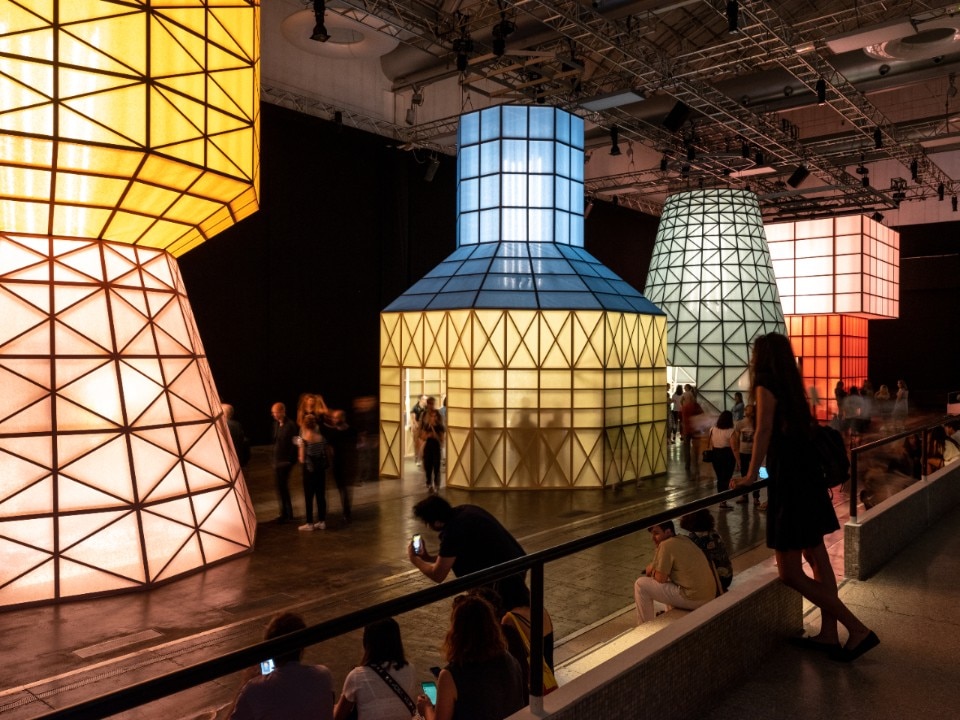
If for Hermès the relationship with design seems to slip into the background with a collection of tableware and fabrics eclipsed by the mundanity of a champagne party and the outfits of its guests, Louis Vuitton promotes an articulated furniture collection that pursues the concept of nomadism – although too often slipping in a questionable shabby chic declination.
Differently, the three-day event of Prada Frames, a symposium of conversations curated by the design studio Formafantasma investigates the complex relationship between design and the natural environment. A laudable initiative in which the Milanese fashion brand stands out above all its competitors as a conscious and far-sighted patron, strongly wary of the multidisciplinary nature of fashion and design.
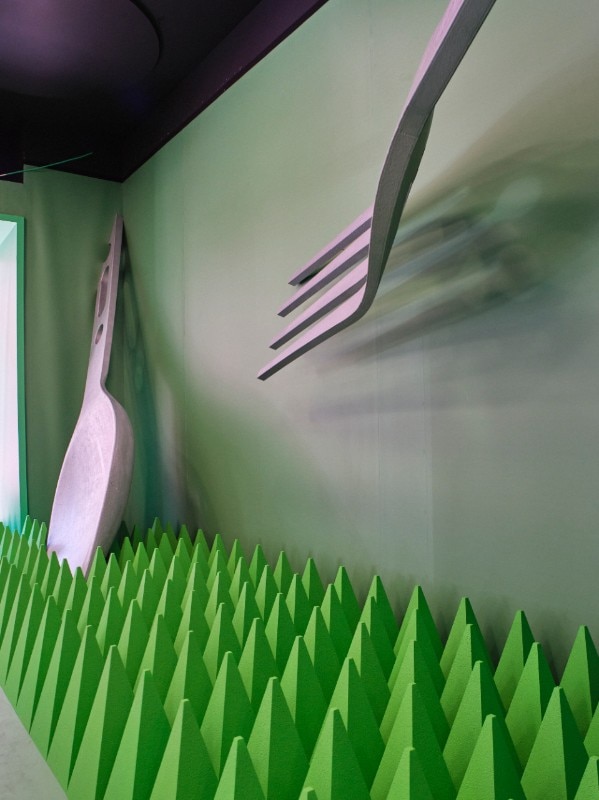
A concept dear to the late Virgil Abloh, whose legacy is celebrated by both Cassina and Alessi, who in the setting of the Manzoni Theater presented their posthumous collaboration on a set of cutlery with an industrial and utilitarian taste. The installation, which nod to the Pratone by Gufram, is accompanied by a 3D video and Instagram filter created by No Text Azienda – a motion picture studio that, no wonder, has often operated in the fashion industry. Although different in the execution, also Sunnei confirmed – this time in its collaboration with Bloc Studios – its vision which goes beyond fashion design only by fostering a dedicated work on inventive and brilliant design pieces.
Then, there is fashion as e-commerce, which also at the Design Week reaffirms its pivotal influence on the zeitgeist. It is no coincidence that at the party set up by Yoox, the youngest interpreters of the spirit of our time can be seen dancing to the performance of the collective European Vampire, who – funny enough – entitled one of their numbers “Zeitgeist”.
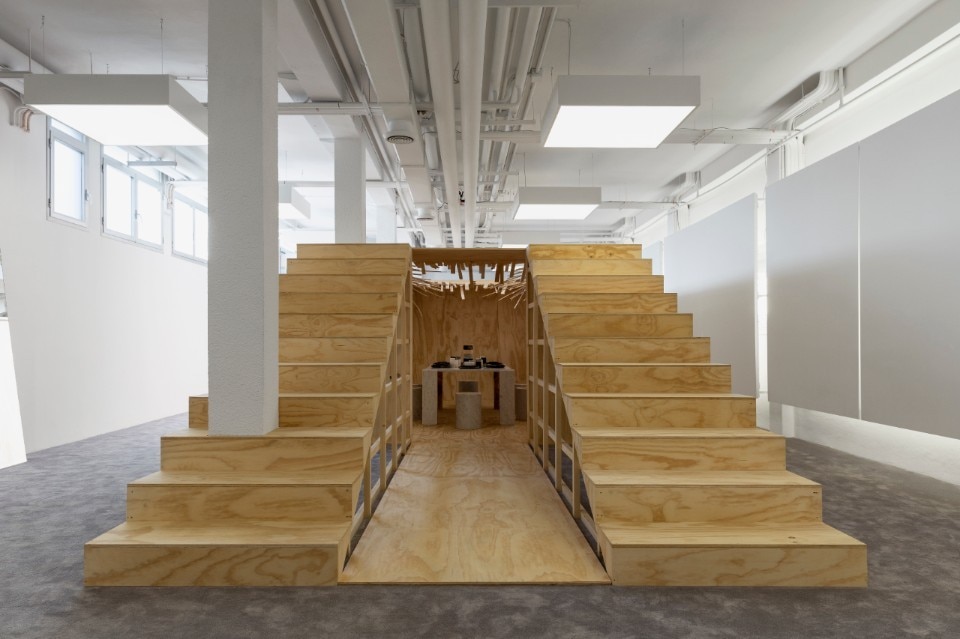
However, sometimes design almost seems like an excuse to mark one’s presence at the Fuorisalone. Take Paul Smith, placing a Gufram Cactus in the Via Manzoni store to celebrate their synergy with Aesop perfumes. Similarly, multiple realities dived into collaborations, such as the one between WOK clothing store and A.P. Ceramiche, or that of MSGM and ME for the new Fantastic ME electric scooter. Everything not to miss the appointment with design and, especially, to find a good excuse to throw a party.
It is undeniable that fashion has brought that urban catwalk attitude that belonged to the Fashion Week also to the Salone. If in the past, tote bags marked the social rank of the insiders of the design industry, now in Via Maiocchi – home to its same-named Spazio – mullets and trekking shoes worn with futuristic attitude salute fashion’s aspiration to be perceived on the same level as art and design.
There Brain Dead, one of the streetwear brands most dedicated to capsule collections that go beyond mere clothing, presented an armchair made of samples and misprints of t-shirts – with Balenciaga following suit in its Montenapoleone store. Nearby, under the scorching sun of Brera elderly and navigated lizards hop from one event to another in a spectacular but dignified display of Chanel twin sets and tanned wrinkles paying homage to Burri and his Cretto, perhaps.
Then there is Carhartt – that for some time now has been distinguishing itself for sponsoring cultural initiatives in Italy (such as the working hub DOPO? As well as the upcoming Forgotten Architecture book) – which reaffirms, on a macro-scale, the attention of contemporary fashion on workwear, confirming its role as the official uniform of the demiurges of creativity.
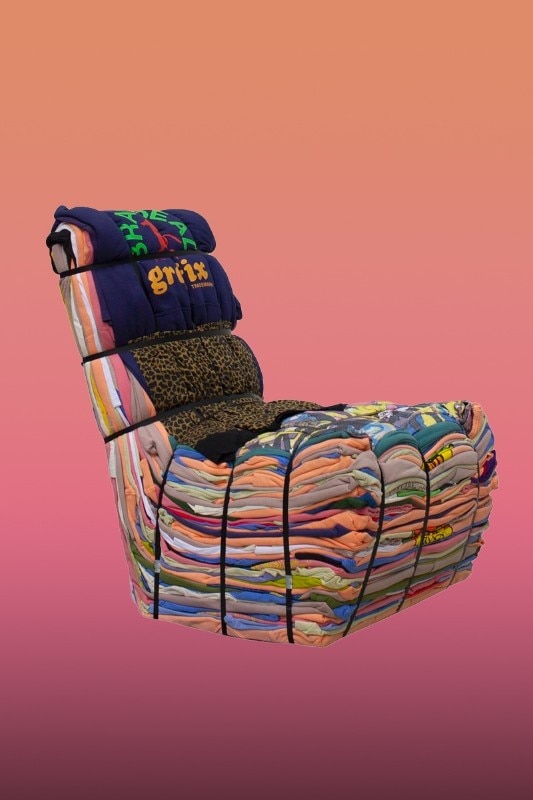
However, it is Capsule, the new publication for an “International Review of Radical Design & Desire Theory” born under the initiative of Kaleidoscope magazine to offer a fascinating lesson. The editorial project, jointly with the Capsule Chair by Nuova, highlight not only the tension nurtured by the fashion system for design, but on a broader scale – may the reader excuse the term – the hype generated by the latter on contemporary culture.
Quoting the words of its founder Alessio Ascari, “radical” is mostly a “funky” word, which influences a hip-hop sampling-like attitude to sourcing and re-interpreting a plethora of iconographic references with the aim “of inspiring the modus operandi of a new generation”.
One might wonder whether the Florentine radical designers or Mario Bellini are now igniting the same excitement sparked by limited edition t-shirts or sneakers in drop culture. Or, on the other hand, whether fashion – often still misperceived as a vain and superficial industry – is seeking a dialogue with design to further elevate its status.
At the same time, it is clear how the research on materials and shapes conducted by fashion occupies an equal position to the one that in the past belonged to interior designers. A transformation to be credited to the restless boundary-breaking activity conducted by streetwear, the true fil rouge of these multidisciplinary interactions, which now find their new status quo in the Design Week.
If in the past design – especially in its radical current – was the interpreter of militant urges, today fashion is, within the creative industry, the discipline that is entrusted the most with political responsibilities, like sustainability and circularity.
Opening image: Prada Frames. Courtesy Prada


